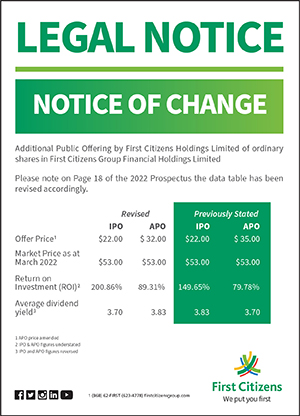Online and Mobile Banking Security

About Online and Mobile Banking:
Online and Mobile Banking are digital banking services that allow First Citizens’ customers to access and manage their financial accounts through the internet or mobile devices, such as smartphones and tablets. These services provide a convenient and efficient way for individuals to perform various banking activities remotely, without the need to visit a physical bank branch.
Online Banking typically refers to accessing banking services through a web browser on a desktop or laptop computer. Customers can log in to their online banking accounts using a username and password and perform a wide range of transactions, including checking account balances, transferring funds between accounts, paying bills, and viewing transaction history.
Mobile Banking, on the other hand, involves using a mobile banking app provided by the financial institution to access banking services on a smartphone or tablet. Mobile banking apps offer similar functionality to online banking but are optimized for smaller screens and touch-based interfaces. Customers can download the mobile banking app from app stores, log in using their credentials, and perform banking transactions securely from anywhere with an internet connection.
Both Online and Mobile Banking provide customers with the flexibility to manage their finances on the go, 24/7, and offer features designed to enhance convenience.
Threats to Online and Mobile Banking Security:
- Phishing Attacks: Fraudulent attempts to trick individuals into divulging sensitive information, such as login credentials or personal details, through emails, text messages, or phone calls.
- Malware Infections: Malicious software designed to infect computers and mobile devices, compromising security and privacy, including banking Trojans that steal financial information.
- Man-in-the-Middle (MITM) Attacks: Intercepting communication between a user and a banking website or mobile app to capture sensitive data, such as login credentials or financial transactions, without the user’s knowledge.
- Data Breaches: Unauthorized access to a financial institution’s databases or servers, resulting in the theft of customer information, including names, addresses, and account numbers.
- Account Takeover: Unauthorized access to a user’s online banking account, often through stolen login credentials or weak authentication methods, allowing attackers to conduct fraudulent transactions.
- Mobile Device Risks: Security risks associated with the portable nature of smartphones and tablets, including device loss or theft, insecure Wi-Fi connections, and malicious apps.
- Social Engineering: Manipulating individuals into divulging sensitive information or performing actions that compromise security, such as impersonating bank representatives or tricking users into transferring funds to fraudulent accounts
How to be Secure in Online and Mobile Banking:
- Use Strong and Unique Passwords: Create strong, complex passwords for your online banking accounts. Avoid using easily guessable information and use a unique password for each account.
- Regularly Monitor Your Accounts: Review your bank statements and transactions regularly to identify any unauthorized or suspicious activity. If any discrepancies are noted, Initiate the self-service options on the mobile application to resolve.
- Keep Personal Information Private: Avoid sharing sensitive information like account numbers, PINs, or passwords through email, text, or social media. Legitimate banks will not request such information through these channels.
- Use Secure Wi-Fi Networks: Access online banking only from secure and trusted Wi-Fi networks. Avoid using public Wi-Fi for sensitive transactions.
- Logout After Each Session: Always log out of your online banking session, especially when using public computers. This prevents unauthorized access to your account.
- Set Account Alerts: Take advantage of account alert features offered by your bank. Receive notifications for large transactions, low balances, or any unusual account activity.
- Secure Your Mobile Banking App: Use a strong password or biometric authentication for your mobile banking app. Enable app-lock features if available

